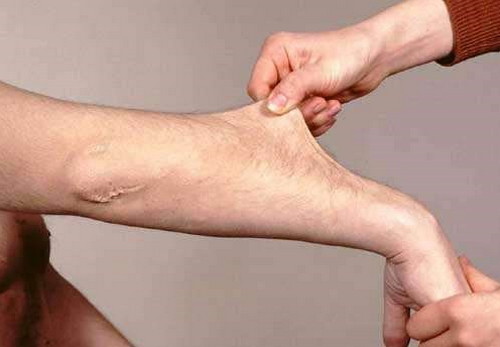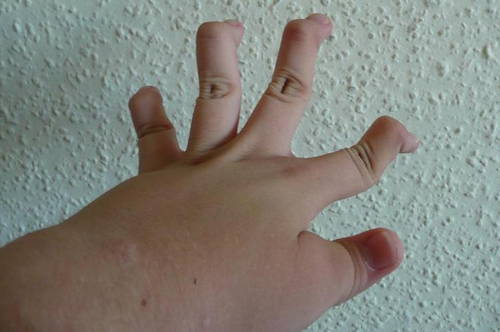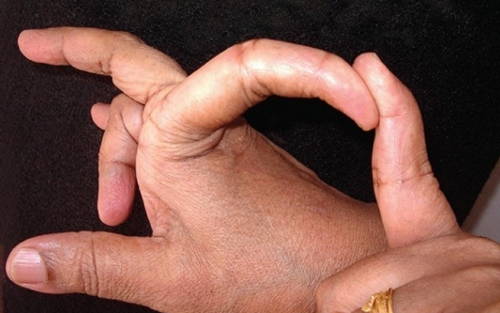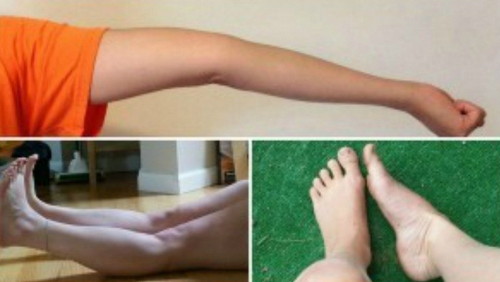Ehlers Danlos Syndrome
What is Ehlers danlos Syndrome ?
Ehlers Danlos syndrome is a condition that affects the connective tissues of the body, i.e., skin, joints, blood vessel walls, etc. Ehlers-Danlos syndrome is a genetic disease, which illustrates unpredictable, hypermobile joints, unstable movements, loosely stretching skin, and fragile tissues.
People that are suffering from Ehlers Danlos symptoms should see a doctor who is well aware of the condition and related disorders. Only a doctor with experience in diagnosing connective tissues disorder can correctly diagnose Ehlers-Danlos syndrome. Most of the times, this specialist is a medical geneticist.
It is necessary to know that people showing minor signs of Ehlers Danlos syndrome are to be diagnosed as early as possible. So that they can be prescribed a solution to prevent extreme complications. This article is a complete description of Ehlers Danlos syndrome, its causes, types, diagnosis, treatment, and management. Let’s start with understanding the basics of this syndrome.
What is Ehlers Danlos syndrome?
Ehlers Danlos syndrome (EDS) is an inherited medical condition that involves the connective tissues of the body. Connective tissues are usually responsible for providing the support to the skin, blood vessels, bones and body organs. As it is understood, all these structures are made of a protein called collagen. In Ehlers-Danlos syndrome, the patient suffers from a defect in collagen production (1).
Recently, 13 major subtypes of Ehlers Danlos syndrome have been distinguished. The most severe form of this syndrome is called “vascular type Ehlers Danlos syndrome.” It causes the blood vessel walls, inner linings of intestines, and organs to rupture (2). “Hypermobile Ehlers-Danlos syndrome” also known as “EDS type-3” is considered as the least severe type of Ehlers Danlos syndrome (3).

Image 1: Elasticity of skin in Ehlers Danlos syndrome
Picture Source: patient.azureedge.net
Each one of these types targets a different area of the body. But all of these types have one thing common, which is hypermobility. Hypermobility means an unusually high movement range in the joints, which causes discomfort and irritability.
Classification of Ehlers Danlos syndrome
Following are a few types of Ehlers Danlos syndrome. Some of them look like overlapping each other. That is why the patient needs to see a reputed medical geneticist for correct diagnosis.
- Hypermobile EDS (hEDS)
- Classical EDS
- Vascular EDS Kyphoscoliosis EDS
- Arthrochalasia EDS
- Classical-like EDS (clEDS)
- Spondylodysplastic EDS (spEDS)
- Musculocontractural EDS (mcEDS)
- Myopathic EDS (mEDS)
- Cardiac-valvular EDS (cvEDS)
What Causes Ehlers Danlos syndrome?
Mostly Ehlers Danlos syndrome appears to be a genetically inherited condition. Only some minor cases of Ehlers Danlos syndrome are non-inherited. It means that most of the times, it is caused by spontaneous gene mutations (4). The collagen production in connective tissues is disturbed by defects in genes.
Specific genes collectively control assembly of collagen. A gene ADAMTS2 is responsible for producing the protein, which works with collagen. Some of the genes that take part in collagen assembly include COL1A1, COL1A2, COL3A1, COL5A1, COL6A2, PLOD1, TNXB and others (5).
Common Symptoms
As Ehlers Danlos syndrome is caused by a mutation of genes; parents are silent carriers of these genes, which are later on transferred to their children. The parents, despite carrying the genes for Ehlers Danlos syndrome may not exhibit the symptoms of the disorder.
They are not even aware of what they are carrying in their genetics. When the genes become dominant (in the next generation) the condition is categorized as Ehlers Danlos syndrome.
The most common symptoms of Ehlers–Danlos syndrome are as follows (6).
- Loosening of joints
- Increased elasticity of the skin
- Skin folds on the yes
- Fragile skin
- Skin easy to bruises
- Muscle pain and fatigue
- Problems in heart valves
- Benign growths on pressure areas, i.e., elbows and knees
- Premature osteoarthritis
- Protruding eyes
- Transparent skin, thin nose, and lips
- Fragile blood vessels
- Collapsed lungs
- Chronic degenerative joint disease

Photo 2: A case of vascular Ehlers Danlos syndrome
Picture Source: upload.wikimedia.org
How is an Ehlers Danlos Syndrome diagnosed?
Knowing the symptoms will help a person to self-diagnose the Ehlers Danlos syndrome. But this self-diagnose is not sufficient. It is necessarily required to go for medical diagnosis by a consultant.
The doctor may try some diagnostic tests to diagnose Ehlers Danlos syndrome (except for hEDS) correctly. Some of these tests include genetic testing, skin biopsy, internal body examinations, and echocardiogram (7). All of these tests are aimed to study any abnormality on organ and cellular level.
The blood sample can be tested for the genetic mutations. Echocardiography will check the deformities in the heart. The skin biopsy will tell about the abnormalities in collagen production. Sometimes the doctor to know if the problematic gene is present in an embryo can also do a DNA test. However, this DNA testing is only done when a woman’s eggs are fertilized outside of her body.
Differential diagnosis
Ehlers Danlos syndrome is not the only genetic syndrome that affects people. There are others, which are closely related to it. To diagnose if the condition is Ehlers-Danlos syndrome and nothing else, the doctor often makes a differential diagnosis (8).
For example, another disorder called “Cutis Laxa” the skin also appears to lose and to hang. It also shows wrinkles like Ehlers-Danlos syndrome. Another condition called “Marfan syndrome’ also shows hypermobility of joints which is accompanied by the similar cardiovascular complications as that of EDS. It is necessary to know that the symptoms are indicating Ehlers-Danlos syndrome and not a related disorder.

Image 3: Hyper extensibility of fingers in Ehlers Danlos syndrome
Picture Source: openi.nlm.nih.gov
Potential complications of EDS in future
In future, Ehlers Danlos syndrome may show complexities by following means.
- Chronic joint pain diseases
- Dislocation of a joint
- High risk of arthritis
- Slow healing of wounds and formation of permanent scars
Treatment for Ehlers-Danlos syndrome
There is no as such treatment for the syndrome. But the current treatment options available to ease the widespread and onset of symptoms include the following.
- Physiotherapy (9)
- Surgery (to repair the damaged joints)
- Medicines to relieve pain
These treatment options can be switched, altered or changed as per the severity or complication of the syndromes
Management of Ehlers Danlos syndrome
There is no permanent cure for the Ehlers Danlos syndrome. The options prescribed by the doctor are to support the body to overcome the condition. The treatments such as physical therapy, medicines, surgery, etc. can be helpful to prevent the future complications but they are not a complete fix.
All these medical interventions are limited to symptomatic therapy. If someone has a family history of Ehlers Danlos syndrome, it is required to consult a genetic counselor for the management of this disease.
Genetic counseling is required to understand the pattern of inheritance, expression, and prevention of Ehlers Danlos syndrome.

Photo 4: Representation of Ehlers Danlos syndrome
Picture Source: i2.wp.com/www.thediaryofanalzheimerscaregiver.com
Prevalence of Ehlers Danlos syndrome
Ehlers Danlos syndrome is not very common. The statistical data tells that it affects only 1 in 2500 or 1 in 5000 individuals (10). The clinical data suggest that it could be more common than the statistical reports. It has an equal risk for both men and women regardless of their race, ethnicity, and region.
Life expectancy with Ehlers Danlos syndrome
The prognosis depends on which type of Ehlers Danlos syndrome is affecting a patient. The individual health status and lifestyle of the patient also matters. The life expectancy can be shortened when the patient is diagnosed with a vascular type of Ehlers Danlos syndrome for the possible risk of organ rupture (11).
Other types of the syndrome do not affect life expectancy. There can be a range of severity of the syndrome, but each person’s case is unique. There is the treatment of the discomforting symptoms and easy preventive measures to adapt.
In pregnancy
Ehlers Danlos syndrome is more damaging when it shows up during pregnancy. Usually, the vascular type of Ehlers-Danlos syndrome is more likely to hit in this situation. The patient may face severe complications during pregnancy (12).
If the patient is diagnosed with Ehlers-Danlos syndrome before pregnancy, she must consult a genetic counselor before planning a pregnancy.
The final word
If you doubt that you are having any symptom of Ehlers Danlos syndrome, it is necessary to seed medical assistance. Only a doctor can tell if you are suffering from Ehlers Danlos syndrome or not via a number of tests. If you are diagnosed with the syndrome, the doctor will educate you with effective disease management plans.
References:
- https://ghr.nlm.nih.gov/condition/ehlers-danlos-syndrome
- https://rarediseases.info.nih.gov/diseases/2082/vascular-ehlers-danlos-syndrome
- https://www.ehlers-danlos.com/eds-types/
- https://ghr.nlm.nih.gov/condition/ehlers-danlos-syndrome
- https://en.wikipedia.org/wiki/Ehlers–Danlos_syndromes
- https://www.mayoclinic.org/diseases-conditions/ehlers-danlos-syndrome/symptoms-causes/syc-20362125
- https://www.ehlers-danlos.com/eds-diagnostics/
- https://emedicine.medscape.com/article/1114004-differential
- https://www.physio-pedia.com/Ehlers-Danlos_Syndrome
- https://ghr.nlm.nih.gov/condition/ehlers-danlos-syndrome
- https://www.ehlers-danlos.com/what-is-eds/
- https://www.ehlers-danlos.com/2012-annual-conference-files/Jaekle_EDS_and_pregnancy.pdf
